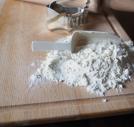How To Treat Diabetic Foot Ulcers
Experts estimate that somewhere in the world a person with diabetes will lose a lower extremity every half minute due to a wound. One of the complications that can occur in diabetes is the development of foot ulcers. These wounds occur for a variety of reasons including poor blood supply due to damaged blood vessels, neuropathy, which is damage to the nerves which makes it difficult for diabetics to feel their extremities, and finally, because diabetics tend to heal less quickly than non-diabetics. Indeed, diabetics are estimated to have a 10-fold higher risk of requiring an amputation than non-diabetics.
No Injury Is Considered Minor In Diabetic Feet
In diabetes even seemingly minor injuries should be treated as serious injuries. This includes even calluses which are often precursors to diabetic foot ulcers. One of the biggest components of treating diabetic foot ulcers is to engage in proactive, preventative diabetic footcare. This includes keeping the feet dry and clean, preventing them from cracking by applying moisturizer regularly, taking care when trimming nails, wearing well-fitting shoes, avoiding going barefoot, visually inspecting the feet daily, using caution at nail salons, and curing any hint of athlete's foot before it can cause cracks or sores on the feet. If any cuts, scrapes, or cracks are detected, the area should be immediately cleaned, triple antibiotic cream should be applied, the wound should be covered with gauze bandages, and the wound should be inspected by a healthcare professional or wound care center within 7 days.
Proper Footwear Is Essential
In addition, some people may need to regularly wear diabetic shoes which are sturdy, breathable, and protect the foot from damage. These measures are extremely important because diabetic ulcers are often painless due to neuropathy so extremely serious tissue damage may occur with no accompanying pain. In general, however, diabetics should avoid tight, pointy shoes, shoes made of materials that don't breathe like plastic, and they should avoid flimsy shoes such as flip flops. Diabetics, especially those with known vascular problems in the foot or neuropathy, should avoid going barefoot, even at home.
Treatment Of Diabetic Foot Ulcers
Debridement
However, if a diabetic foot ulcer does occur there are many things that may need to be done to treat it. First, a doctor may need to debride the wound. This means that dead tissue in the wound is removed. This can be done in a variety of ways including using a scalpel, special scissors, flushing the wound, using a whirlpool, applying enzymes, or applying wet dressings. Many times wet dressings are applied to the wound, allowed to dry, and are then removed. As they are pulled off the wound, dead tissue comes with them.
Antimicrobials
Second, antibiotics or antifungals may be necessary to treat the infection. These will be prescribed initially based on the severity of the wound and may be taken orally, or they may need to be given intravenously. If the wound is particularly serious, cultures may be taken from the wound to identify the pathogen so that antibiotic therapy can be specific and targeted.
Remove Pressure
Third, all pressure on the wounded area must be avoided. This may mean that a person is confined to a wheelchair, or they may need to wear a cast, or use crutches, or wear a special diabetic boot that cushions the foot.
Control Blood Sugar
Finally, keeping blood sugar levels under tight control will aid in healing. When dealing with a complication such as a diabetic foot ulcer, proper diabetes management is essential.
At Home Wound Care
Once home, further wound care may be necessary. Typically this will consist of regular dressing changes. Your doctor will explain to you what you should do in your specific case. But once the wound is fully healed, it will be important to continue to engage in proper diabetic foot care hygiene to prevent a recurrence.
If these steps are followed, treatment of a diabetic foot ulcer can be successful and may prevent the need for an amputation.
Source: National Institute of Health
Photo: Pexels



































